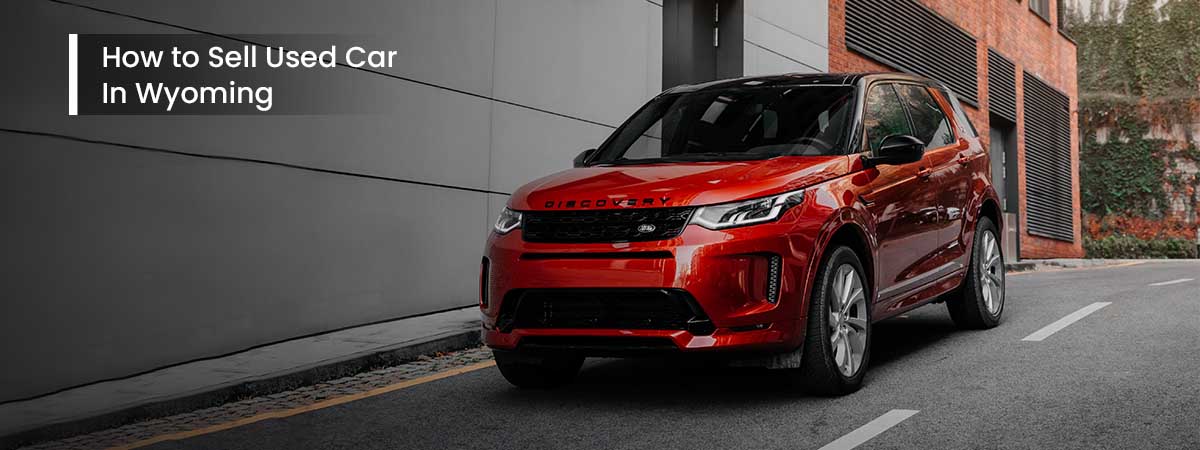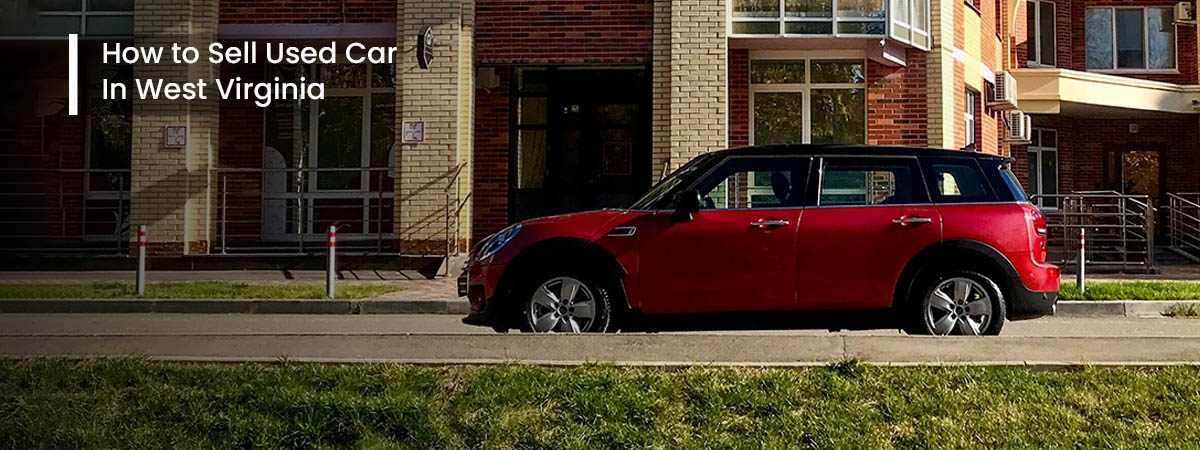How to sell a car in California?

You've come to the perfect place if you're considering selling your old vehicle in California, regardless of where you live.
Demand and prices in the automobile sector are rising faster than before. Whether you want to upgrade your current vehicle and get a new one or you simply want to get rid of the extra vehicle that frequently sits in the garage, this is the best time to sell a car. You should prepare beforehand and learn how to sell a car in California.
Find out how to sell a car in California, the most populous and third-largest state in terms of area. Every state has different rules, so if you're selling a car in California, you'll need to follow the detailed instructions.
We've listed the procedures and paperwork needed for selling a car in California below so you can do it quickly and for the maximum money.
Step 1: Gather All The Required Documents
You can show that you are the car's owner, thanks to the California Certificate of Title. You have to provide the buyer of your car the title when you sell them your car.
You should organize your documentation and determine which documents are necessary to ensure a smooth sale before selling your car. In California, it goes beyond only the bill of sale for a car.
Application for Duplicate Title or Paperless Title (REG 227) is used to complete the ownership transfer in the case that title is absent.
Additional Paperwork for Selling A Used Car in California:
Form for Transfer and Reassignment of a Vehicle/Vessel (REG 262). Call the DMV at 1-800-777-0133, and they will mail you the form. Each seller must submit a REG 262 if the vehicle has been sold more than once under the same title.
If the title contains problems, you can fix them by using the form Reg 101, Statement of Error, or Erasure.
Car bill of sale (California DMV form)
Statement of Facts (REG 256), if you're selling the car to a member of your family.
Lien Satisfied/Title Holder Release (REG 166), If you still have a lien on the vehicle, the lienholder must sign the document in order for it to be released, and it must also be notarized.
Notice of Transfer and Release of Liability, which must be finished within five days of the transaction and can be filed online or by mail (REG 138), tells the DMV that you are no longer accountable for any parking violations or other infractions associated with the car after the sale.
Vehicle Emission System Statement (REG 139). Smog certification that is up to date must be obtained within 90 days of the transfer.
Step 2: Obtain A Current Smog Certificate
To sell a car in California, you will often need to have a current smog certification. You must visit a STAR station, which determines California's smog certification requirements. Find a certified smog check station using this tool.
The most common kinds of vehicles that are free from smog testing are:
Models from 1975 and earlier that are gas-powered.
Models from 1997 and earlier that are diesel-powered.
Electric-powered vehicles.
Natural-gas-powered vehicles.
Motorcycles.
Vehicles that are less than four years old.
Please be aware that the smog certification is only good for 90 days, so you should make sure the time of the sale matches up with it.
Step 3: Get Your Vehicle Inspected
Most likely, your prospective buyer will want to have the car inspected to make sure everything is in working order. Even when the buyer pays for this process with a reputable mechanic, you still need to work with the buyer on it.
Remember that you obtain a CarFax report detailing the history of your car, including any accidents and significant problems. Even if the buyer doesn't ask for one, you should still have one done.
Step 4: Select A Price Range
There is more to learning how to sell a car in California than just the paperwork. Selling the car at a price that feels right to you is important. a cost at which selling your car is acceptable. In order to have a range to negotiate from, it's a good idea to have a minimum price and maximum price in mind.
Are you curious about your car's value? Visit our website cashforcars.inc right away to get the market value of your vehicle for free!
Read more: How To Negotiate Used Car Price
Step 5: Be Prepared To Pay
Any fees incurred as a result of selling your car must be paid. According to the California DMV website, you can owe the following fees:
Duplicate title.
Transfer.
Use tax, based on the buyer’s county of residence.
Registration.
Penalties.
Within 10 days after the date of the car sale, all fees and papers must be paid.
Step 6: Complete The Necessary Paperwork.
Once you have a buyer, you must get payment and complete the required papers with them to make the sale official.
The Vehicle/Vessel Transfer and Reassignment form REG 262, which both the seller and the buyer must complete, must be obtained in advance from the DMV.
Make sure you have the release form available if there is a lienholder. After that, you both need to notify the DMV of the ownership change and remove the license plates.
Step 7: Provide All Of Your Documentation To Make It Official.
You must submit the transfer documentation to the DMV after completing the required paperwork. Within 5 days of the sale, you can complete the Notice of Transfer and Release of Liability online.
You must have the following in order to finish the procedure:
Seller’s full name and address.
The VIN number.
License plate numbers.
To make things official with the DMV, both you as the seller, and the buyer must properly submit documentation and pay the necessary costs.
Editor’s Note
It can take some time to figure out how to sell a vehicle in California, but with enough perseverance and patience, it can be done. You might currently make the maximum money when selling your car and putting cash in your pocket. You may sell your car immediately and receive many offers by listing it on cashforcars; it's a pretty simple process.
Remember that the majority of U.S. states view the vehicle title as a legal document, thus it is recommended to use the full legal names (no nicknames) of all parties and legible handwriting in either black or blue ink. Take your time when filling it out and be careful not to make any mistakes or use whiteout, which could render the document invalid.
FAQs
Q.1 What paperwork do I need to sell my car in California DMV?
The major documents you may need are:
The vehicle's title.
Certificate of Title or Application for Duplicate Title or Paperless Title (REG 227)
Transfer fee (FFVR 34)
You may need Vehicle/Vessel Transfer and Reassignment Form REG 262.
Valid smog certificate.
Bill of Sale REG 135 (PDF) form.
Q.2 How do I notify DMV of sold car in California?
Within five calendar days of the sale, the registered owner or the person with actual possession of a vehicle that is being sold or transferred must submit a REG 138 form to the DMV (transfer). A printed REG 138 or the Internet Notice of Release of Liability (IRL) on the DMV Internet page can be used for this.
Q.3 Do I need to notify California DMV when I sell my car?
A Notice of Transfer and Release of Liability (REG 138) can be filled out and mailed to the address provided. You should make a photocopy of the finished REG 138 for your records out of precaution.
Q.4 How do I protect myself when selling a car in California?
7 Strategies for Self-Protection When Selling a Car
Examine each caller carefully.
Use caution when taking the test drive.
Make the transaction secure.
Always keep a paper trail.
Your personal information has been blocked.
Complete the transfer of title.
Q.5 Does CA DMV require bill of sale?
Before registering the vehicle, you must have a signed bill of sale in the state of California. Therefore, when you visit the DMV, you must carry a copy of the bill of sale for your vehicle. In order to transfer the title of the car, you must also present your bill of sale.





